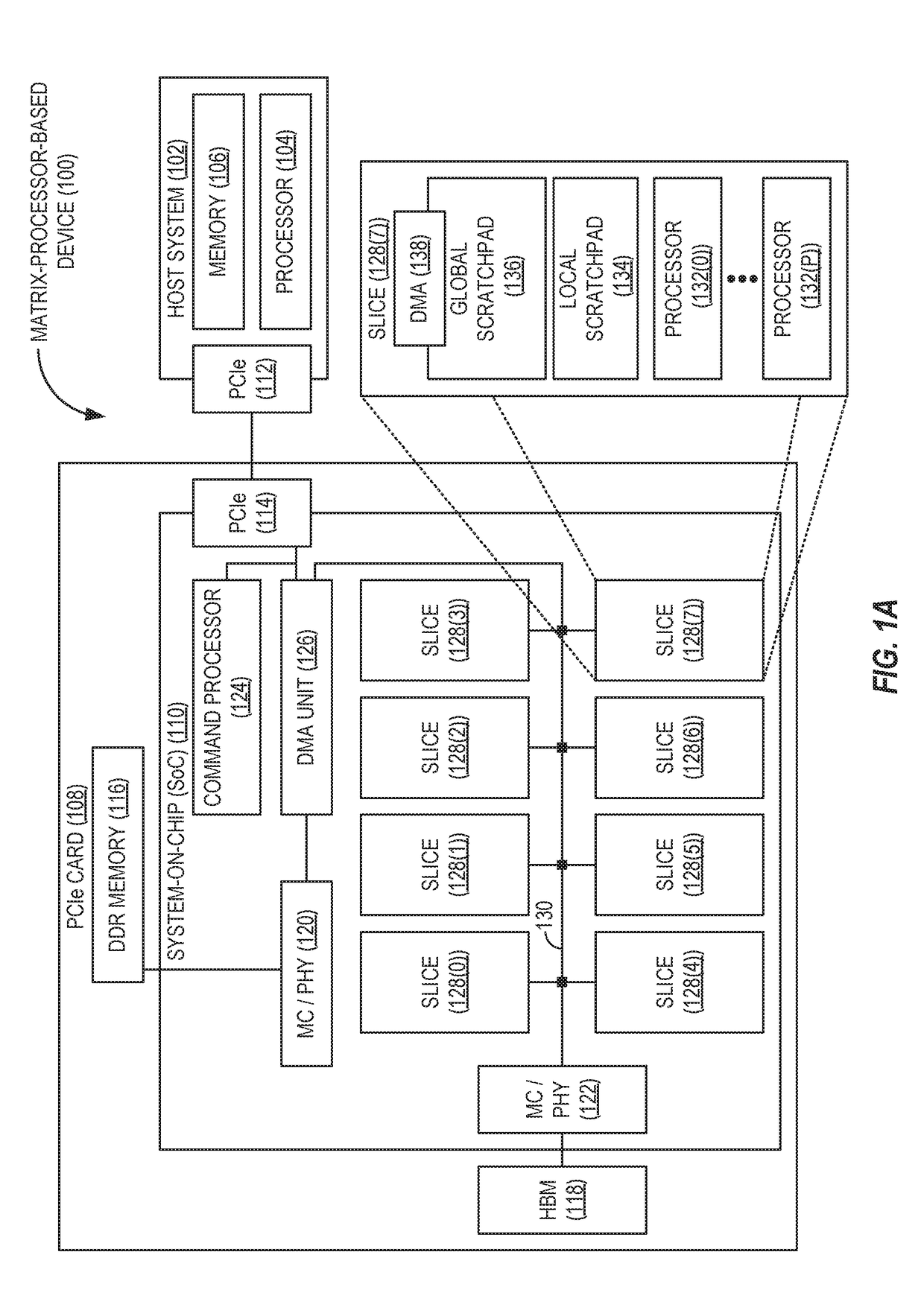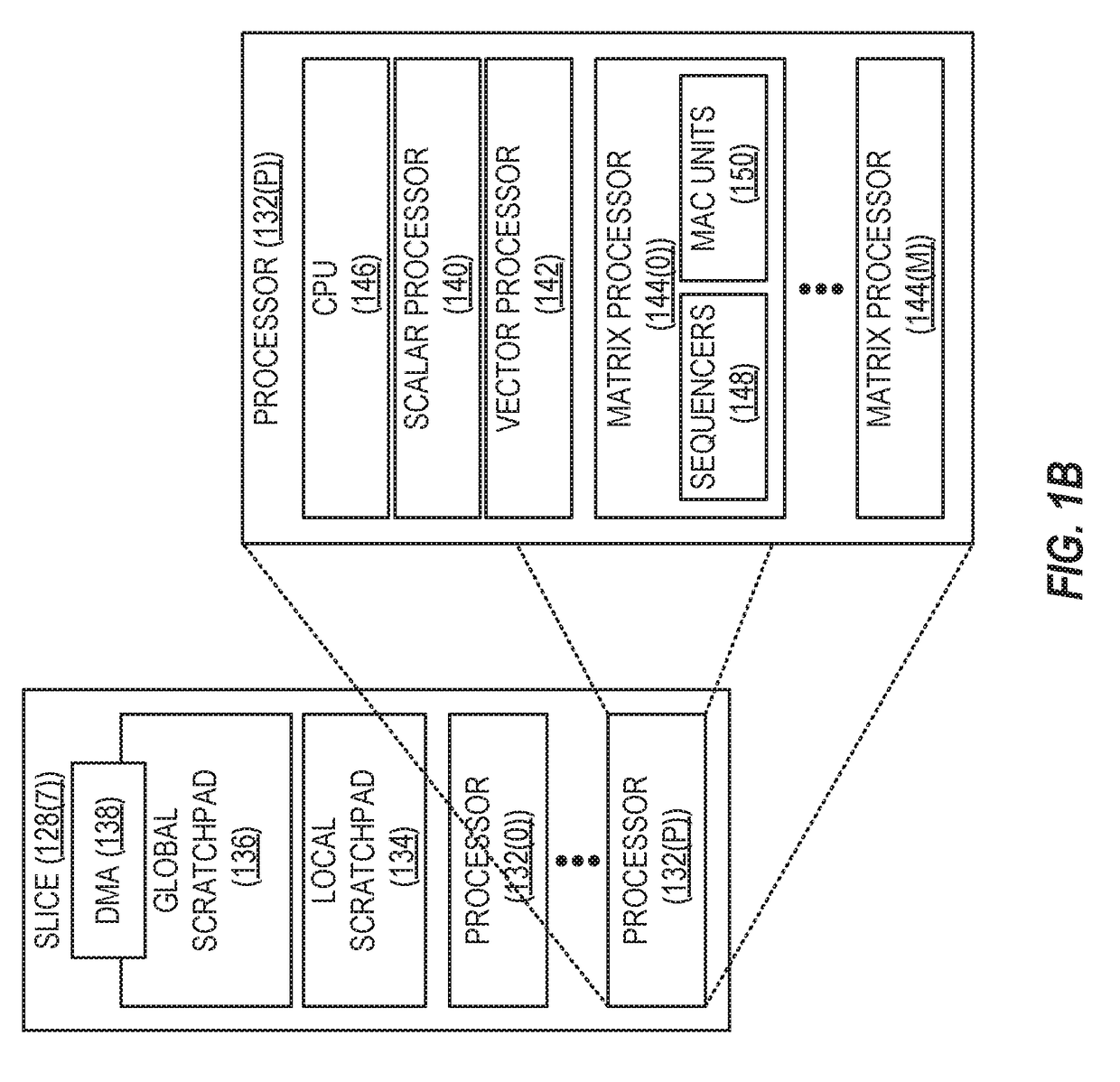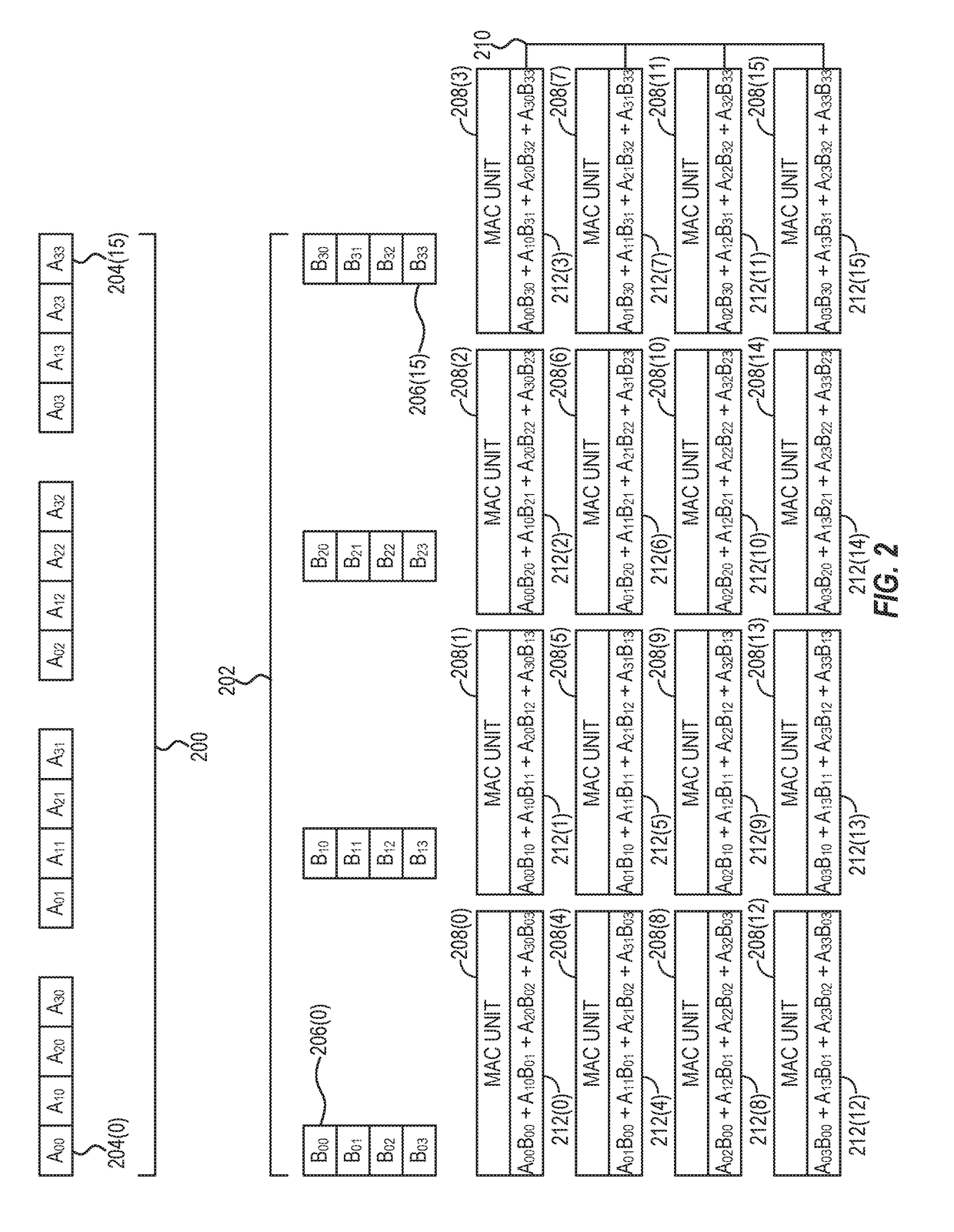Providing efficient multiplication of sparse matrices in matrix-processor-based devices
a matrix processing and sparse technology, applied in the field of matrix processing in matrix processing devices, can solve the problems of difficult or impracticable design and programming explicit algorithms with acceptable performan
- Summary
- Abstract
- Description
- Claims
- Application Information
AI Technical Summary
Benefits of technology
Problems solved by technology
Method used
Image
Examples
Embodiment Construction
[0017]With reference now to the drawing figures, several exemplary aspects of the present disclosure are described. The word “exemplary” is used herein to mean “serving as an example, instance, or illustration.” Any aspect described herein as “exemplary” is not necessarily to be construed as preferred or advantageous over other aspects.
[0018]Aspects disclosed in the detailed description include providing efficient multiplication of sparse matrices in matrix-processor-based devices. In this regard, FIGS. 1A and 1B illustrate an exemplary matrix-processor-based device 100 configured to provide efficient multiplication of sparse matrices. Referring now to FIG. 1A, the matrix-processor-based device 100 provides a host system 102, which in some aspects may comprise an ARM®- or INTEL® x86-based server computer. The host system 102 includes a processor 104 (e.g., one or more central processing units (CPUs), processors, and / or processor cores) and memory 106 (e.g., double data rate (DDR) sy...
PUM
 Login to View More
Login to View More Abstract
Description
Claims
Application Information
 Login to View More
Login to View More - R&D
- Intellectual Property
- Life Sciences
- Materials
- Tech Scout
- Unparalleled Data Quality
- Higher Quality Content
- 60% Fewer Hallucinations
Browse by: Latest US Patents, China's latest patents, Technical Efficacy Thesaurus, Application Domain, Technology Topic, Popular Technical Reports.
© 2025 PatSnap. All rights reserved.Legal|Privacy policy|Modern Slavery Act Transparency Statement|Sitemap|About US| Contact US: help@patsnap.com



